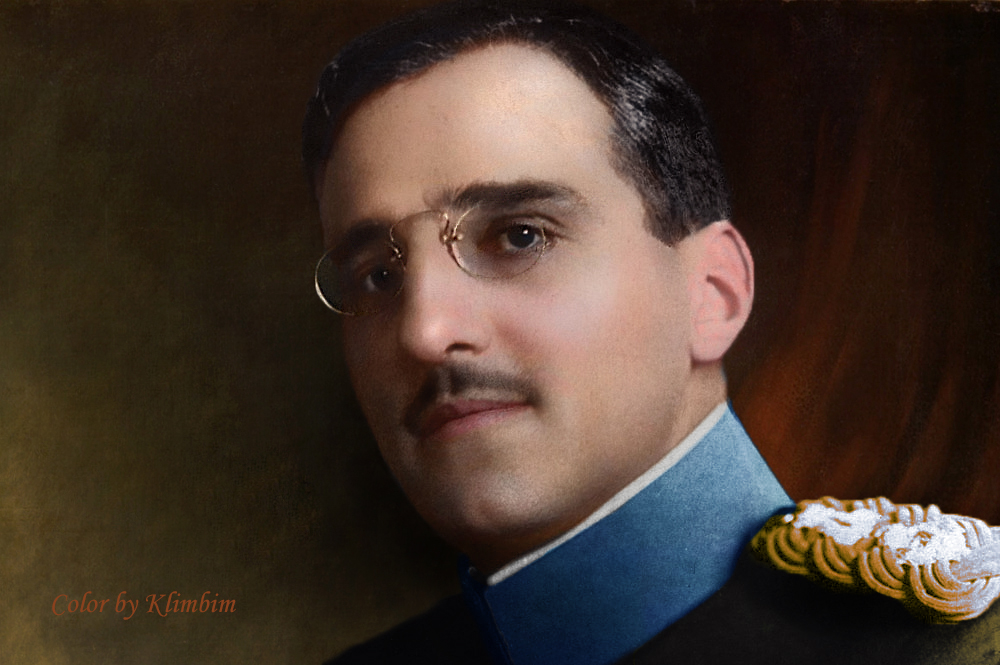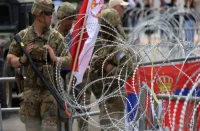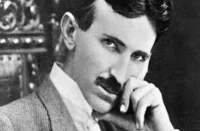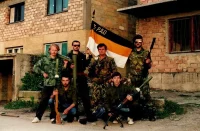The political consequences of the 1918 Geneva Conference
The London Yugoslav Committee became pushed aside with Geneva negotiations in November 1918 and, in fact, became replaced by the National Council in Zagreb as a representative political organization of the South Slavic population in Austria–Hungary.[i] A political role of the London Yugoslav Committee was already over before the convocation of the Geneva meeting, when the Serbian Prime Minister refused a demand given by the committee’s President about the international recognition of the Yugoslav Committee at the beginning of October 1918. According to N. Pašić’s opinion, there were three main reasons for this refusal of A. Trumbić’s demand:
1) In the case of recognition, it would be two political centers of unification, that would be more useful for Italy than for the Yugoslavs.
2) The London Yugoslav Committee could not be equal with the Serbian Government in the process of unification for the reason that the committee was created by itself.
3) It was impossible that at the Peace Conference the Serbs from Austria–Hungary would be represented by the London Yugoslav Committee but not by the Serbian Government in consideration of the war efforts by Serbia and Serbian victims in WWI.
Nonetheless, for A. Trumbić, such N. Pašić’s attitude “was anti-liberal, anti-democratic and opposed to the principle of the nation”.[ii] A question with regards to the numerical representation of the Yugoslav lands at the Yugoslav mutual ministry, however, was one of the main sources for the dispute between the Serbian Government and the London Yugoslav Committee. In other words, N. Pašić supported the “simple state” and a parity ratio of the mutual ministry’s members. He also demanded that only the Serbian Government and the Zagreb National Council could delegate these members, but not and the London Yugoslav Committee. A. Trumbić, however, contrary to N. Pašić, interceded with “the idea of equal rights” and sharply challenged N. Pašić’s principle of parity.[iii] In sum, according to the 1918 Geneva agreement, a new South Slavic state should be created as Serbo-Croatian Yugoslavia, based on a dual formula of inner state organization similarly to Austria–Hungary in 1867. Shortly, what was the Aussgleich in 1867 for the Habsburg Monarchy (Austria and Hungary) that should be the 1918 Geneva agreement for the future of Yugoslavia, which would be constituted by two confederal states (Serbia and Croatia).[iv]
After the 1918 Geneva Conference, it was apparent that the latest phase of the process of the Yugoslav unification would be concluded with an agreement between the Serbian Government and the Zagreb National Council of Slovenes, Croats, and Serbs. In the other words, these two political actors would create a single South Slavic state after bilateral negotiations excluding the London Yugoslav Committee.
As a very historical matter of fact, from a legal point of view, the common Yugoslav state (of all South Slavs except the Bulgarians) was proclaimed in Zagreb by the National Council on November 23rd, 1918 by the Proclamation by the National Council of the Unification of the State of Slovenes, Croats, and Serbs with the Kingdom of Serbia and Montenegro.[v] The National Council immediately gave an initiative for the final arrangement upon verification of its unilateral Proclamation by Serbia’s Regent on November 24th, 1918, when a single Council’s delegation was organized to visit Belgrade[vi] with a hope that the Regent would accept the unification in a form as proclaimed in Zagreb. Basically, the main hope of the Council was that Belgrade will accept by the act of verification the borders of the State of Serbs, Croats, and Slovenes how they have been claimed by Zagreb. Those borders would, therefore, include Slovenia, Istria, Croatia, Slavonia, Dalmatia, Bosnia, Hercegovina, Srem, Banat, Baranja, and Bačka as Croatia within Yugoslavia.
The 1918 Naputak
The Zagreb National Council’s delegation arrived in Belgrade with the only aim: to make a final version of the verification of proclaimed South Slavic state with the Serbian Government and the Serbian Regent – Aleksandar I Karađorđević in a form of a new and final Proclamation of a single Yugoslav state. Nevertheless, Council’s deputies brought the so-called Naputak, or the Council’s conditions with regards to the unification. In fact, the Council’s principal requirement in the Naputak was that a National Assembly of the Serbs, Croats, and Slovenes would decide on the type of the state organization (republic or monarchy) by a “qualified majority”.[vii] Nevertheless, according to the Naputak, the Constituent Assembly should vote the Constitution, to determine a type of state-governmental organization (republic or monarchy). On one hand, the Council’s demand that the Constituent Assembly would vote the Yugoslav Constitution was in the spirit of the 1917 Corfu Declaration. However, on the other hand, the Council’s requirement that a type of the state-governmental organization would be settled by the same assembly was contrary to the 1917 Corfu Declaration and was done in the favour of the 1918 Geneva Declaration as by the 1917 Corfu Declaration agreed by the London Yugoslav Committee and the Serbian Government it was fixed that the Yugoslav state-governmental organization is going to be the monarchy with Serbia’s Karađorđević royal family.

According to the Naputak, the Constituent Assembly had to be established and begin its work not later than six months after the peace covenant. During the interregnum period, the King would be an executive administrator, while the Governmental Council would be a legislative one. The Governmental Council would be made especially for this purpose of the interregnum and would be composed with the members of the Zagreb National Council, the London Yugoslav Committee as well as with a proportional number of the representatives from Serbia and Montenegro. Subsequently, according to the Naputak, the political role of the London Yugoslav Committee still was not abolished. In other words, the Committee’s members should participate in the work of the Interregnum’s Governmental Council alongside their colleagues from the Zagreb National Council and the Serbian Government. It means that the South Slavs from Austria-Hungary would be represented by two political actors while the rest of them (the Serbs and the Macedonian Slavs from Serbia and Montenegro) by one actor. Nevertheless, at that moment, the London Yugoslav Committee was recognized as one meritorious political factor for the creation of a common Serbian-Croatian-Slovenian state. The final demand by the Zagreb National Council was that the Governmental Council would carry out elections for the Constituent Assembly. Nonetheless, during the final negotiations in Belgrade with the delegates of the National Council in Zagreb, the Serbian authorities made clear that the Croats and the Slovenes are free to establish their own independent national republican states after the unification of all ethnical and historical territories of the Serbs into a single state (the Kingdom of Serbia). In this case, however, Croatia and Slovenia would exist as “dwarfish states”.[viii]
Vojvodina and Montenegro
However, two important events occurred on the soil of the South Slavs, in the time between the Zagreb National Council’s Proclamation of the Yugoslav state (in Zagreb on November 23rd, 1918) and the final formal Proclamation of almost a single South Slavic state (in Belgrade on December 1st, 1918). They have been the formal political unions between: 1) The province of Vojvodina (South Hungary settled by a relative Serbian majority); and 2) The Kingdom of Montenegro (settled by an absolute Serbian majority) with the Kingdom of Serbia (including the eastern part of Kosovo province, North Raška region, and Vardar Macedonia – territories liberated and annexed by Serbia in 1913).
First, on November 25th, 1918 the Great National Council of Serbs, Bunjevci, and other Slavs in Vojvodina, officially issued a Resolution and proclaimed first the break of state-juridical relations between Vojvodina and Hungary, and second unification of Vojvodina (Bačka, Banat, Baranja) with the Kingdom of Serbia on its session in Novi Sad.[ix] The principal outcome of this Resolution was the fact that the Great National Council (in fact the Serbian one),[x] under the leadership of a Serb Jaša Tomić, avoided the National Council in Zagreb and directly united Vojvodina with Serbia.[xi] On the same day, Serbian deputies from Srem, the members of the National Council in Zagreb, decided to unite the province of Srem directly with the Kingdom of Serbia but not via the State of the Slovenes, Croats, and Serbs. According to their decision, only the Kingdom of Serbia could represent the Serbs from Srem at the upcoming Peace Conference in France.[xii]
Second, one day later (November 26th, 1918), the Podgorica Great National Assembly of the Serbian people in Montenegro dethroned the Montenegrin ruling Petrović-Njegoš dynasty in favor of Serbia’s Karađorđević royal family (nevertheless, these two royal houses have been in direct blood relations).[xiii] On the same day, the Great National Assembly in Podgorica proclaimed the union of Montenegro with Serbia, under the scepter of the Karađorđević dynasty by favoring the union of the Serbs, Croats, and Slovenes into a single state.[xiv] Nonetheless, the process of unification between Montenegro and Serbia was accomplished by the Central Montenegrin Council for the People’s Union, formed in February 1917 and lead by Andrija Radović.[xv]
Consequently, just before the final negotiations between Zagreb and Belgrade with regards to the verification of the Zagreb Proclamation of the Yugoslav unification (November 23rd, 1918), between the Zagreb National Council and the Serbian Government, Vojvodina (Banat, Bačka, and Baranja), the biggest part of Bosnia-Herzegovina (which proclaimed the unification with Serbia), and the Kingdom of Montenegro became represented by an enlarged Kingdom of (a Greater) Serbia. The principal essence of this fact was that the official attitude by the Serbian politicians after December 1st, 1918 was that the Kingdom of Serbia “brought” (i.e., incorporated) into the Kingdom of Serbs, Croats, and Slovenes (Yugoslavia from 1929) the following lands: 1) Serbia proper (Serbia after the Berlin Congress of 1878); 2) Kosovo-Metochia; 3) North Raška (or Sanjak); 4) the biggest part of Bosnia-Herzegovina (after the self-determination of the local Serbs who have been the absolute majority in the country); 5) Vardar Macedonia (achieved after the Balkan Wars of 1912–1913); 6) Vojvodina; and 7) Montenegro with South Sanjak.[xvi]
While the National Council in Zagreb wanted to postpone the final negotiations concerning the verification of the unification with the Serbian Government for the time after the Peace Conference, the Serbian Government wanted to finish the process of unification by its verification of the Zagreb Proclamation before the start of the Peace Conference in order to avoid the question concerning the borders of the new state on the Peace Conference itself.[xvii] Such Serbia’s policy was backed by the fact that several South Slavic lands expressed the wish to be united with Serbia. Alongside Montenegro and Vojvodina, it was the case with 42 out of 52 regions in Bosnia-Herzegovina (at least 2/3 of the whole country). Together with the Bosnian-Herzegovinian Orthodox Serbs, many Muslims (who identified themselves as the Islamic Serbs) from Bosnia-Herzegovina supported Serbia’s dynasty of Karađorđević.[xviii] According to the British expert for Yugoslav affairs at that time, Wickham Steed, if plebiscite would be organized in Bosnia-Herzegovina the result of voting will go to the Serbian favor.[xix]

Simultaneously, the Dalmatian Provincial Council gave five days to the National Council in Zagreb to decide with regards to the union with Serbia. It was obvious that the National Council was losing its sway in several important areas of its own state. In addition, the Zagreb National Council was completely helpless concerning the fact that the Italian military troops occupied subsequent parts of Dalmatia and Istria. These facts have been the crucial reasons for the Council’s decision to negotiate with Serbia as soon as possible, primarily in order to save what left of Dalmatia (not occupied by the Italians) with the crucial help of the Serbian army. Nevertheless, as it was pointed before, even before the Zagreb National Council sent an official delegation to Belgrade to negotiate with the Serbian authorities about an official proclamation of a united Yugoslav state, the Council proclaimed its own unification of the State of Slovenes, Croats, and Serbs with the Kingdom of Serbia and the Kingdom of Montenegro on November 23rd, 1918.
On November 4th, 1918, however, the Council accepted a proposal by the deputy in the Croatian Parliament (Sabor) in Zagreb, Vitomir Korać, to officially invite the Serbian army to cross the Drina River and to help the State of Slovenes, Croats, and Serbs to survive. Consequently, the authorities of the Zagreb National Council sent a letter to Aleksandar I Karađorđević, as Serbia’s Regent and the Commander-in-Chief of the Serbian army, asking him to give an order to the Serbian army to immediately enter Croatia, Slavonia, Dalmatia, Bosnia, Herzegovina, Srem, Banat, Baranja, and Bačka.[xx] The Serbs Valerijan Pribićević and Lazar Popović (the members of the Zagreb National Council’s delegation to be later sent to Belgrade) as well as required from the Serbian Regent on November 9th, 1918 to send the Serbian army to protect the sea-port of Rijeka (Fiume), Međumurje (a region between Slovenia and Hungary), and to occupy Slavonia (today North Croatia). The Serbian army entered these provinces until November 17th, 1918.[xxi]
Reposts are welcomed with the reference to ORIENTAL REVIEW.
Endnotes:
[i] By the Geneva negotiations in November 1918, the Serbian Government unquestionably de facto recognized the National Council in Zagreb as a legal governmental authority of the Slovenes, Croats, and Serbs from Austria–Hungary. However, the Serbian Government rejected the idea that the Kingdom of Serbia and the State of Slovenes, Croats, and Serbs are equal political partners in the process of Yugoslav unification. Nevertheless, from the Slovenian political point of view, all three major Slovenian political parties fought for the unification of the State of Slovenes, Croats, and Serbs with the Kingdom of Serbia with a common requirement that the Slovenes as a nation have to enjoy the broadest cultural autonomy within Yugoslavia [Peter Vodopivec, Od Pohlinove slovnice do samostalne države. Slovenska zgodovina od konca 18. do konca 20. stoletja, Ljubljana, 2006, pp. 164–165].
[ii] Dragoslav Janković, Bogdan Krizman, Građa o stvaranju jugoslovenske države, I, Beograd, 1964, pp. 333–337.
[iii] ibid., vol. II, pp. 497–506.
[iv] Nikola Pašić resigned from the post of Prime Minister after the 1918 Geneva negotiations. The Serbian Minister of Inner Affairs, Stojan Protić, pointed out that politicians from Zagreb wanted to separate Serbs from Bosnia, Herzegovina, Srem, Slavonia, Dalmatia, Vojvodina, and Croatia from their brothers from Serbia. According to him, the monarchy and the dynasty of Karađorđević have been two fundamental and unquestionable requirements from the Serbian Government concerning the creation of Yugoslavia [Dragoslav Janković, Bogdan Krizman, Građa o stvaranju jugoslovenske države, vol. II, Beograd, 1964, p. 647].
[v] Snežana Trifunovska, Yugoslavia Through Documents From its creation to its dissolution, Catholic University Nijmegen, Martinus Nijhoff Publishers: Dordrecht/Boston/London, 1994, pp. 151–153.
[vi] This decision was speeded up by two reasons: 1) The Italian military penetration into the territory of the State of Slovenes, Croats, and Serbs; and 2) The fear of a restoration of the Habsburg Monarchy. However, the Slovenian members of the Zagreb Council’s delegation did not arrive at the time in Belgrade [Peter Vodopivec, Od Pohlinove slovnice do samostalne države. Slovenska zgodovina od konca 18. do konca 20. stoletja, Ljubljana, 2006, p. 165].
[vii] Branislav Gligorijević, Demokratska stranka i politički odnosi u Kraljevini SHS, Beograd, 1970, p. 204. Aleks Dragnić is in the opinion that B. Gligorijević is wrong when he wrote that a qualified majority is the two-thirds of the votes [Aleks Dragnić, Srbija, Nikola Pašić i Jugoslavija, Beograd, 1994, pp. 123–147].
[viii] Archives of Military-Historical Institute (Arhiv Vojnoistorijskog instituta), Beograd, 16, 1, Memoars of Dušan Simović.
[ix] The Serbian politicians from Vojvodina decided to establish Serbian National Council for Vojvodina on October 27th, 1918 as a political reaction against the establishment of the National Council of Slovenes, Croats, and Serbs in Zagreb on October 26th, 1918. The primal aim of this Serbian National Council, as a principal governmental institution of Vojvodina, was to unite Vojvodina with the Kingdom of Serbia but not with the State of the Slovenes, Croats, and Serbs proclaimed in Zagreb. The Serbian National Council formed its own military detachments called (Serbian) National Guard. The Novi Sad Serbian National Council invited the Serbian army to enter the territory of Vojvodina at the beginning of November 1918. The first military units of the Serbian army crossed Danube and Sava Rivers on November 9th and 10th, 1918. According to the armistice treaty between Hungary on the one hand and Serbia and Entente powers on the other signed on November 13th, 1918, the Serbian and Entente armies had to occupy the territory of South Hungary (the Serbian Vojvodina) up to the demarcation line drawn northern from Pecs and Timişoara.
[x] The composition of the Council was: Serbs-578, Croats-58, Slovaks-62, Ukrainians-21, Germans-6, Hungarians-1. The Croatian deputy Blaško Rajić explained later why the Croats voted for the union of Vojvodina with Belgrade but not with Zagreb: Serbia was an ally of Entente while the State of Slovenes, Croats, and Serbs proclaimed in Zagreb was recognized by no one. Furthermore, the Entente treated the State of Slovenes, Croats, and Serbs as a hostile country.
[xi] Jaša Tomić, Naša nova država u kolevci, Novi Sad, 1918, pp. 8–11; Spomenica oslobođenja Vojvodine 1918. godine, Novi Sad, 1929; Petar Pekić, Povijest oslobođenja Vojvodine, Subotica, 1939; Kosta Milutinović, Vojvodina između Beograda i Zagreba, Zagreb, 1966.
[xii] Archives of Military-Historical Institute (Arhiv Vojnoistorijskog Instituta), Beograd, 3, box 25, IV, 31, The First Serbian army, November 25th, 1918. This decision by the Serbs from Srem to unite themselves with Serbia but not with historical Croatia was tremendously criticised by the Croatian politicians as a plot against the Croatian historical rights [Kosta Milutinović, Vojvodina između Beograda i Zagreba, Zagreb, 1966, p. 355].
[xiii] Archives of Serbia, Beograd, Ministarstvo Inostranih Dela, Političko Odeljenje, 1918, X/456, X/438, 439, 447; Snežana Trifunovska, Yugoslavia Through Documents From its creation to its dissolution, Catholic University Nijmegen, Martinus Nijhoff Publishers, Dordrecht/Boston/London, 1994, pp. 153–156. Serbia’s Karađorđević and the Montenegrin Petrović-Njegoš dynasties were in direct blood relations as Serbia’s Regent Aleksandar I Karađorđević married daughter (Zorka) of the Montenegrin King Nikola I. Moreover, Aleksandar I was born in the Montenegrin capital Cetinje in 1888 where his father Petar I Karađorđević, Serbia’s King from 1903 to 1918, lived in exile at that time. In October 1918, when the Serbian army entered Montenegro, Aleksandar I stated that the Serbians (the Serbs from Serbia) did not come to Montenegro to rule the country but they came to liberate Montenegro and to unite it with Serbia. After the unification, Montenegro has to have its own governmental organization [Archives of Military-Historical Institute, Beograd, 3, box 25, № 33, 21. X 1918]. However, the opponents of the Serbian-Montenegrin unification, the so-called “Greens”, claimed likewise dethroned the Montenegrin King that all decisions issued by the Great Podgorica National Assembly on November 26th, 1918 are not legal and not valid as they are in opposition to the Montenegrin Constitution. In addition, according to their opinion, Montenegro was in November 1918 under Serbia’s military occupation. However, according to the Montenegrin Constitution (Articles 2 and 16), the King can be dethroned (he is losing his “legitimate rights”) if he left the country and the people. King Nikola I of Montenegro emigrated to Italy (left the country and the people) at the beginning of 1916 during the Austro-Hungarian military offensive against Montenegro. Nevertheless, on January 7th, 1919, it was organized armed rebellion in Montenegro (the “Christmas Rebellion) by the “Greens” supported by the Italians in order to repose King Nikola I to the throne in Montenegro (his daughter was the Italian Queen). The crucial political aim of the “Greens” was to achieve the status of an autonomous state of Montenegro within the Kingdom of Serbs, Croats, and Slovenes (like the Kingdom of Bayern was in the Second German Empire). However, the rebellion failed.
[xiv] Snežana Trifunovska, Yugoslavia Through Documents From its creation to its dissolution, Catholic University Nijmegen, Martinus Nijhoff Publishers, Dordrecht/Boston/London, 1994, “Resolution of the Great National Assembly of the Serbian people in Montenegro concerning unification of Montenegro with Serbia”, pp. 153–156.
[xv] During the session of Podgorica National Assembly, in fact, the “Whites” won a great victory against the “Greens”. The first group was fighting for the unification of Montenegro with Serbia by Montenero’s incorporation into the state body of Serbia. The second one was fighting for the Montenegrin unification with Serbia but under the condition that Montenegro would have a special (autonomous) status in a common state, like Bayern in the German Second Empire (1871‒1918). Actually, the “Whites” had great help from the Serbian army who entered Montenegro at the end of October 1918 while the “Greens” have been supported by Italy and dethroned King Nikolas I living there.
[xvi] It is a question concerning the legal rights of both the Podgorica and the Novi Sad Assembles to make decisions about the unification with Serbia, which became actually the incorporation of Montenegro and Vojvodina into the state body of the Kingdom of Serbia.
[xvii] Memoirs of the Peace Conference, vol. II, New Haven, 1939, p. 252.
[xviii] Archives of Military-Historical Institute (Arhiv Vojnoistorijskog Instituta), Beograd, 3, box 25, 31, Terzić’s report to Pašić.
[xix] Wickham Steed in New Europe, September 26th, 1918.
[xx] Archives of Military-Historical Institute (Arhiv Vojnoistorijskog instituta), Beograd, box 25, 31, The First Serbian army to the Supreme Stuff of the Serbian army, November 10th, 1918; ibid. 3, box 25, 31, November 8th, 1918.
[xxi] Archives of Military-Historical Institute (Arhiv Vojnoistorijskog instituta), Beograd, 4, box 25, 31, The First Serbian army to the deputy of the National Council, major Perk. At that time, according to the reports, the Serbs from Croatia (Lika, Banija, Kordun, Drniš, Knin, Dalmatia) wanted to become a part of the united and Greater Serbia but not to become a part of Yugoslavia. The Dalmatian Croats, likewise the Dalmatian Serbs, supported a monarchical type of the future Yugoslav state, contrary to the Croatian peasants and the citizens of Zagreb who opted for the republican type of the state [Archives of Military-Historical Institute (Arhiv Vojnoistorijskog instituta), Beograd, 3, box 25, 35, Report by command of the 14th infantry regiment from Split, December 6th, 1918; Hrvatska riječ, 14, November 15th, 1918].
To be continued














Comments